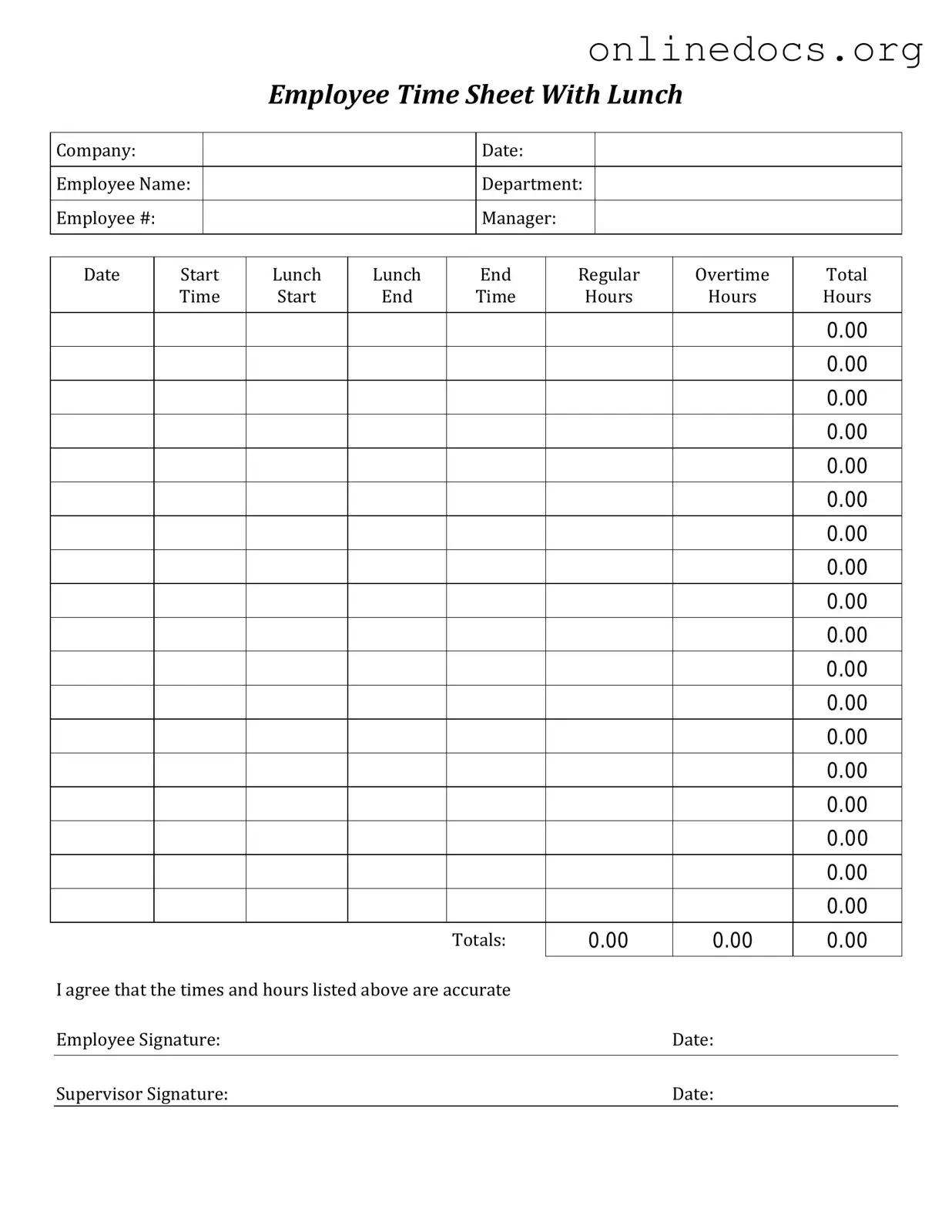The Time Sheet is a document that records the hours worked by employees over a specific period. Similar to the Time Card form, it allows employees to log their daily working hours, including start and end times. This document is often used for payroll purposes, ensuring that employees are compensated accurately based on the time they have worked. It typically includes sections for overtime hours and breaks, just like the Time Card form.
The Attendance Record is another document that shares similarities with the Time Card form. This record tracks when employees are present or absent from work. It provides an overview of attendance patterns and can help identify trends in absenteeism. Like the Time Card, it is essential for managing workforce productivity and ensuring compliance with company policies regarding attendance.
The Payroll Register is closely related to the Time Card form as it summarizes the total hours worked by all employees during a pay period. It includes details such as gross pay, deductions, and net pay. This document relies on the accuracy of the Time Card to ensure that employees are paid correctly. Both documents play a critical role in the payroll process, serving as verification tools for compensation.
The Leave Request Form is another document that complements the Time Card form. Employees use this form to request time off for various reasons, such as vacation or illness. It provides a structured way for employees to formally communicate their absence, which is essential for tracking time off. Like the Time Card, it helps manage employee schedules and ensures that staffing levels are maintained.
In the context of various organizational documents, it's essential to have reliable tools like the Lease Agreement form that, similar to other forms, helps define terms and conditions thoroughly to avoid ambiguities. For landlords and tenants in Ohio, this legally binding document is indispensable for outlining rental terms, and to learn more about it, you can visit legalformspdf.com.
The Work Schedule is similar to the Time Card form in that it outlines when employees are expected to work. This document provides clarity on shifts and hours, helping employees plan their time accordingly. It often includes details about breaks and any scheduled overtime, aligning closely with the information captured on the Time Card.
The Expense Report is another document that bears similarities to the Time Card form. Employees use this report to claim reimbursement for work-related expenses incurred during their duties. While the Time Card focuses on hours worked, the Expense Report tracks financial expenditures, both of which are crucial for accurate accounting and budgeting within an organization.
The Project Time Log is a document that records the time spent on specific projects or tasks. Similar to the Time Card, it helps in tracking employee productivity and project costs. This log provides detailed insights into how resources are allocated and can assist in project management, ensuring that timelines and budgets are adhered to.
The Overtime Authorization Form is akin to the Time Card form in that it documents the approval process for overtime work. Employees must complete this form to receive authorization before working beyond their scheduled hours. This document ensures that overtime is managed effectively and aligns with company policies, much like the Time Card tracks the actual hours worked.
The Job Costing Sheet is another relevant document that shares characteristics with the Time Card form. It helps in tracking labor costs associated with specific jobs or projects. By recording hours worked, it provides a comprehensive view of labor expenses, which is essential for budgeting and financial analysis. Both documents support informed decision-making regarding resource allocation.
Lastly, the Shift Change Request Form is similar to the Time Card form as it allows employees to formally request changes to their scheduled shifts. This document helps maintain clear communication between employees and management regarding availability. By documenting these requests, it ensures that any changes are tracked and managed effectively, similar to how the Time Card records hours worked.
